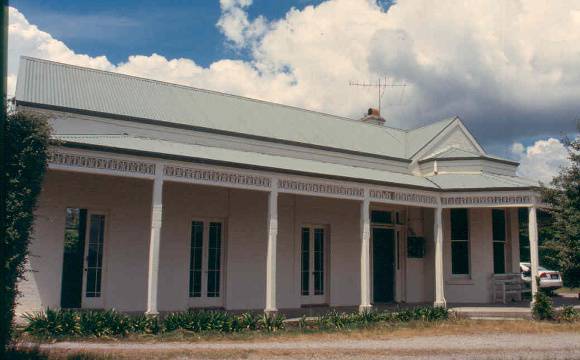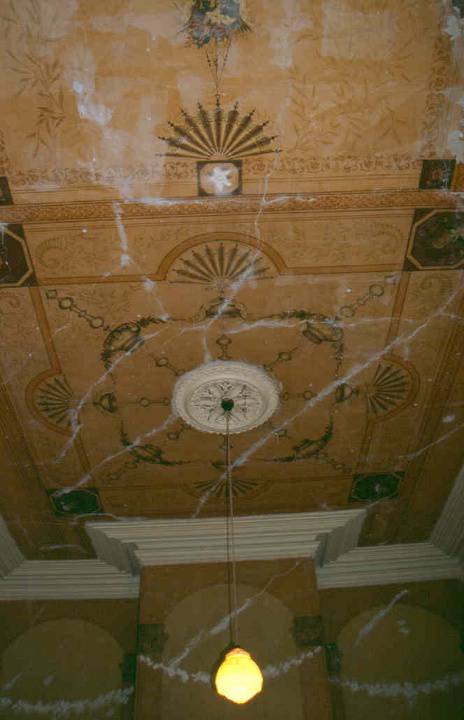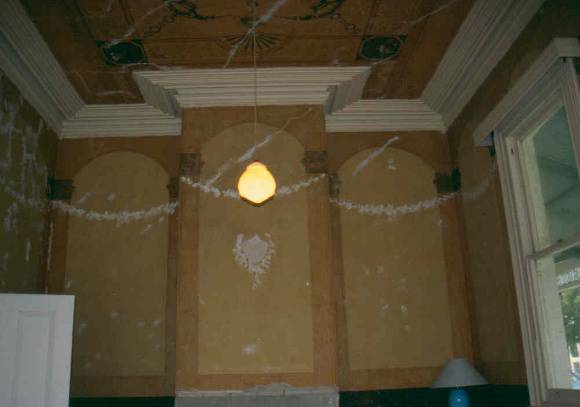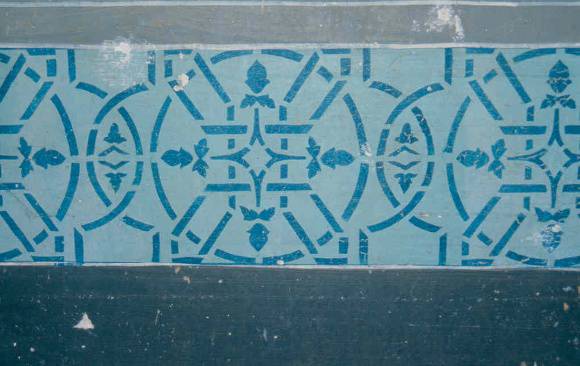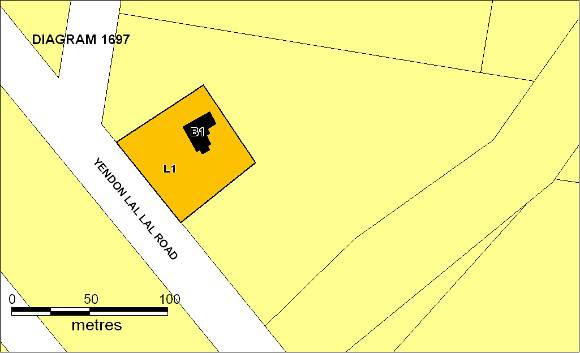| Back to search results » | Back to search page » |
|
ROTHBURY
Location389 YENDON-LAL LAL ROAD LAL LAL, MOORABOOL SHIRE
File NumberHER/2003/000033LevelRegistered |
|
Statement of Significance
What is significant? The two main rooms, the drawing room and dining room, have painted decoration which was uncovered when wallpapers were removed in late 2001. The drawing room features the most extensive decoration with a Classical Revival decorative scheme painted on the ceiling and walls. The ceiling has female busts, horns and flowers painted in panels with elaborate borders. The walls have painted Corinthian pilasters with arches above and delicate floral swags between. The joinery and cornices have been painted white at a later stage, but there is evidence to suggest that they originally matched the early colour scheme. There are many plaster marks on the ceiling and walls. The unpainted shield shapes around the wall possibly mark the location of gas lamp brackets. There is evidence of further decoration under later paintwork. The decoration in the dining room is more restrained. It is mainly a single colour with a stencilled dado and another dado line. There is another unpainted shield shape over the fireplace. Underneath later paintwork, further decorative work can be detected. How is it significant? Why is it significant? Rothbury is aesthetically important for its decorated interior which is particularly sophisticated for this rather modest residence. The design on the drawing room ceiling combined with the simple columns and arches on the walls has been created as a comprehensive artistic work. The simplicity and delicacy of its style and execution set it apart from some of the more opulent decorative schemes of the time.
Rothbury was probably built in the early 1860s and first occupied by JP Howard. It is a single storey, rendered brick house with a corrugated iron roof and return verandah with simple and elegant cast iron decoration. Three rooms along the front have french doors opening onto the verandah and the drawing room has an octagonal bay window.
Rothbury has aesthetic and historical significance to the State of Victoria.
Rothbury has historical significance for the rarity, quality and relative intactness of its early decorative schemes. Although elaborate interior decorative schemes were popular in Victorian times, remarkably few have survived. The painted decoration at Rothbury is a rare surviving essentially intact example of 19th century domestic decoration. The Rothbury example is also rare as an entirely painted scheme which does not feature wallpapers and elaborate plaster and timber work. The walls of the drawing and dining rooms and other areas in the house have the potential to reveal further early paint schemes.
Group
Residential buildings (private)
Category
House


